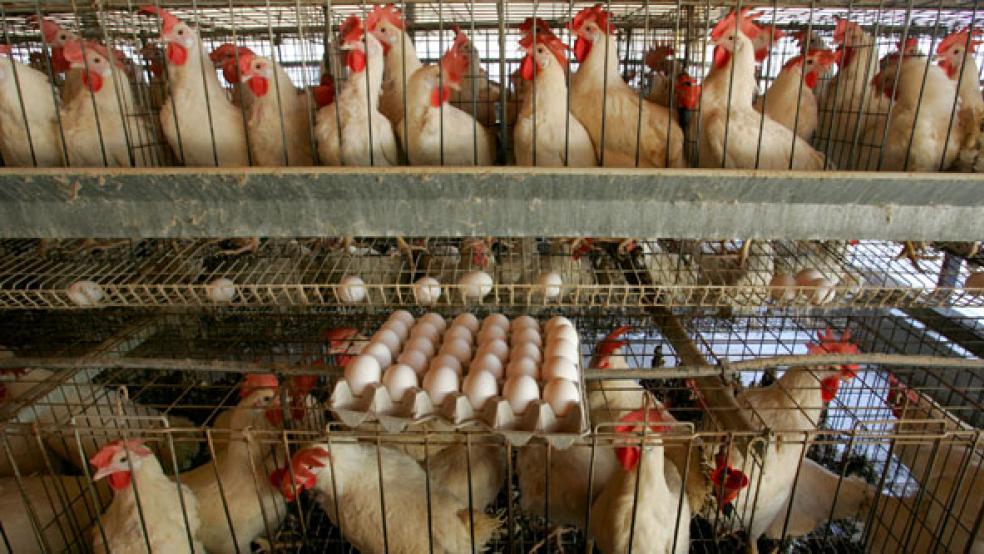Although the U.S. Department of Agriculture has taken several steps in the past eight years to address food contamination in poultry, a new report from the Government Accountability Office is recommending tighter standards to ward against the dangers posed by salmonella and campylobacter.
As harmful bacteria continue to haunt poultry farms, consumers should follow strict guidelines on how to handle, prepare and eat poultry products.
Related: How Americans Like Their Burgers in 2014
The USDA developed guidelines in 2010 for controlling salmonella and campylobacter on poultry farms. In August of this year, the agency published its final ruling on modernizing poultry slaughter inspections, which in theory should have reduced salmonella and other poultry pathogen contamination.
“But the guidelines didn’t include information on the effectiveness of each practice,” the new GAO report noted. “Without providing this information in future guidelines, USDA isn’t fully informing the poultry industry of the potential benefits of adopting these practices and encouraging their implementation.”
Poor practices often result in harmful bacteria ending up in your food: In a January analysis, Consumer Reports found the presence of potentially harmful bacteria in nearly all of the more than 300 raw chicken breasts it purchased at stores across the U.S.
Moreover, large outbreaks continue. The most recent salmonella outbreak between 2013 and 2014 was linked to chicken products produced in California by the poultry giant Foster Farms. The outbreak affected 29 states and Puerto Rico and resulted in more than 600 reported illnesses and 200 hospitalizations.
Related: Tuna Gets Snagged in Food Safety Tug-of-War
Symptoms of salmonella infection include diarrhea, fever and abdominal cramps. The illness usually lasts four to seven days and most people recover from it without treatment. Yet some people may develop a blood infection and become extremely ill; roughly 400 people each year die of salmonella poisoning.
One big problem, the GAO report said, is that the USDA’s Food Safety and Inspection Service (FSIS) has limited authority to enforce its salmonella standards and doesn’t have the same mandatory food recall authority that the Food and Drug Administration has. Additionally, FSIS hasn’t classified salmonella as an adulterant in raw poultry products, the GAO report said.
The GAO recommends that USDA develop additional performance measures for salmonella and campylobacter contamination in poultry products and ensure that future guidelines for controlling these bacteria on farms include information about the effectiveness of each practice. The USDA has agreed with these recommendations.
In the meantime, consumers are in charge of what they put on their plates. Although the Consumer Reports analysis didn’t find brands of chicken breasts with less bacteria than others, there are some important rules to follow when eating chicken:
Don’t wash raw poultry before cooking it. Otherwise you risk spreading the bacteria in poultry juices to other foods, utensils and surfaces.
Related: Eat All the Fried Chicken You Want!
Do wash your hands before and after touching raw poultry. The Centers for Disease Control and Prevention recommends washing your hands with soap and hot water, but if these aren't immediately available, use hand sanitizer until you can properly wash. You should also thoroughly clean any surface or plate that comes in contact with raw poultry.
Select chickens raised without antibiotics. “Chickens without antibiotic resistance to salmonella and other dangerous pathogens can’t pass antibiotic-resistant bugs on to you,” Robert Lawrence, professor at the Johns Hopkins Bloomberg School of Public Health, told Consumer Reports. If you decide to purchase organic chicken, know that while it was raised without antibiotics, chickens can be treated with antibiotics up until their first day of life, as the publication noted.
Cook poultry at 165°F and chill leftovers quickly. This is the safe minimum temperature, according to the CDC. You should use a thermometer to accurately measure the meat’s temperature. It’s also wise to refrigerate or freeze leftovers within two hours of cooking, or one hour if temperatures are above 90°F.
Top Reads from The Fiscal Times:





